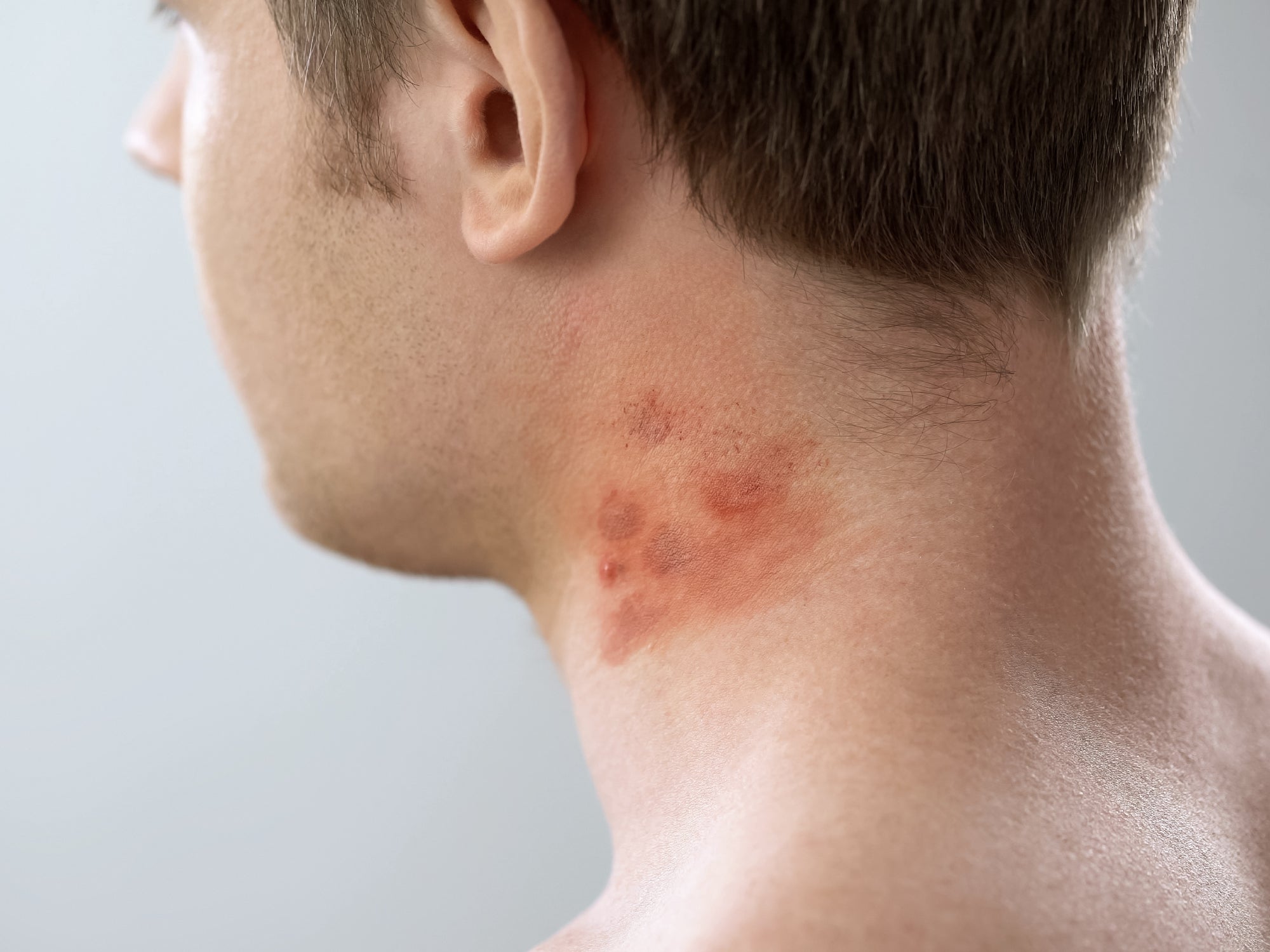
Despite these two skin issues being very different conditions, it can sometimes be pretty hard to tell dermatitis and acne apart!
Two separate skin conditions, caused by separate problems, but since both dermatitis and acne can show up as rashes on the face, it’s fair to say that contact dermatitis can be mistaken for acne - and vice versa! So let’s take a look at both problems and work out how to tell them apart.
Acne
This common skin complaint is notorious for blighting the lives of teenagers, with angry spots and rashes cropping up on their cheeks, chin, forehead, neck, chest and back as they go through puberty and big hormonal shifts. Older adults can also be susceptible to acne at various times in their lives: during the hormonal changes of pregnancy, postnatal period or menopause, or in response to various medications, so the condition isn’t exclusive to kids.
What causes it? That’s mostly down to the production of sebum, the natural oil the skin’s follicles produce in order to build its defences against the outside world. Sebaceous glands can get blocked with sebum, as well as dirt, dust, dead skin cells and bacterial waste, causing blockages and bumps that can get infected by bacterial or fungal invaders. Sebum production and the sloughing of dead skin cells are both affected by stress and medications, as well as hormones, and those can tip a well-balanced cycle of skin repair into a problematic acne flare-up.
Acne shows up as spots, pimples, pustules, papules, whiteheads,blackheads and cysts, in fact inflamed lumps and bumps of all different different shapes and appearances! The varied nature of acne’s manifestations is one of the reasons that can make it hard to distinguish from other skin conditions, such as contact dermatitis.

Contact Dermatitis
This is a type of dermatitis or eczema that’s triggered by contact with an external irritant. Like acne, the result is inflammation, even if the root cause is very different. Contact dermatitis can be similar-looking to acne, in that it causes a rash, but it’s more likely to be itchy and hot than acne. Although sometimes the rash is spotty, like acne, contact dermatitis can come up in blisters (which acne doesn't) and can look like a more widespread area of inflammation rather than individual spots. Contact dermatitis on the face tends to show up as a bumpy, sore, raised rash, where whatever the trigger was has touched it. This might have been a scented soap or cosmetic product, a new foundation, perfume, or something you’ve eaten. It can be intensely itchy and uncomfortable.
You can even get contact dermatitis and acne at the same time, though they're likely to be in different places on your body.
One variant of contact dermatitis is perioral dermatitis, which is much closer in appearance to acne than most types of dermatitis and is often caused by something people have used on their faces; it can appear as angry, inflamed, pustular or papular spots very much like acne. For more information about perioral dermatitis and acne, see our article What Is It? Perioral Dermatitis Vs Acne.

So how do you tell the difference?
Contact dermatitis is likely to come up quickly if you’ve used something new or unusual on your skin, rather than develop and worsen over weeks or months like acne. It will respond to antihistamines or topical corticosteroids (though steroid creams are to be used with caution on the face, and not for longer than two weeks), which acne won’t.
Unlike acne, contact dermatitis is not confined to parts of the body - face, neck, jaw, back, chest - where there’s a concentration of sebaceous glands. You can get contact dermatitis on your hands, feet, and body as well.
In conclusion
If you’re concerned about any rash on your face or elsewhere, get it checked out! If you can’t get to your GP, ask a pharmacist for the right treatment for the right condition, and follow it up with a doctor’s appointment if you need to. Steroids will not help acne and may even exacerbate rosacea or perioral dermatitis, while some acne treatments can worsen dermatitis rashes, so it's important to make sure you're getting the right help for your skin.
---
Balmonds makes a great collection of gentle, natural skincare to keep sensitive skin healthy and clean, whether it is prone to acne, eczema or perioral dermatitis. None of our products contain soap, SLS, perfumes, paraffin or silicones, so they won’t strip oils from the skin or dry it out. Instead, the natural moisturisers and cleansers work in harmony with the skin’s natural oils, keeping it balanced and healthy.
Recommended products:
Balmonds Scalp Oil with tea tree, rosemary & borage (f14.99 for 50ml): a great natural antiseptic rescue oil for anywhere on the body, not just the scalp!
Balmonds Daily Moisturising Cream with hemp & shea (from £13.99 for 100ml): an unscented, paraffin-free nourishing cream for daily use.
Balmonds Rosehip Scar Oil with rosehip & calendula (£18.99 for 50ml): good for improving the appearance of acne scars and supporting the skin's cycle of regeneration and repair.
Balmonds Natural Shampoo & Body Wash with nettle and chamomile (£19 for 200ml): an effective, unscented, SLS-free wash for body, face and scalp.
Balmonds Cooling Cream with menthol, aloe & lavender (£19 for 100ml): a calming lotion to take the heat out of itchy skin.
